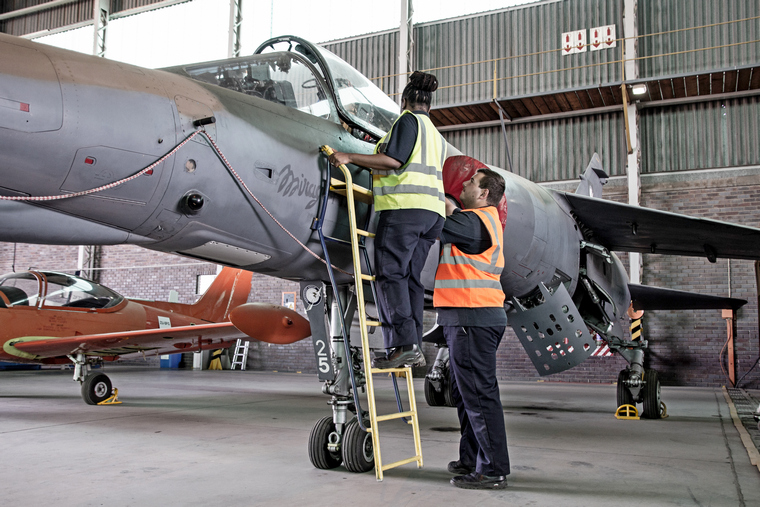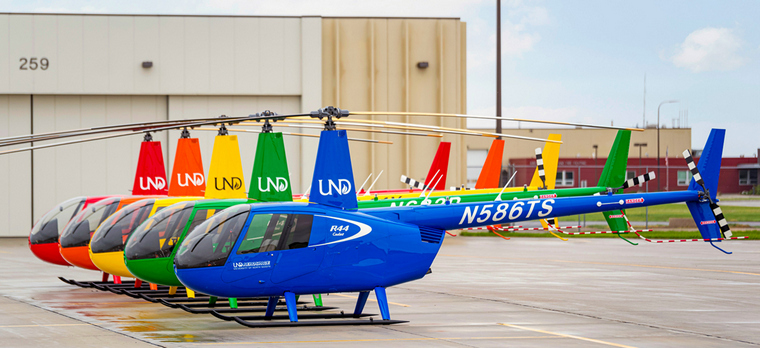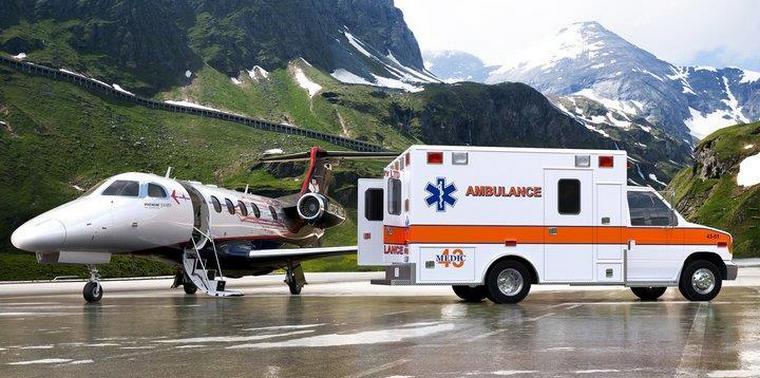








MIDWEEK UPDATE 16 JUNE 2021   COVID 19 REGULATIONS, INITIATIVES AND AEROCLUB NEWS OUR CENTENARY YEARBOOK IS NOW AVAILABLE TO PURCHASE FROM OUR NEW WEBSHOP WWW.AEROCLUB.ORG.ZA/SHOP    The following events will to take place under the rules controlling the number of people congregating together and are therefore not open to the general public. 16 to 20 JUNE Please be advised that the 41st South African Hot Air Balloon Championships will be held at Bill Harrop's Balloon field from 16 - 20 June 2021. For more information go to www.hotairballoons2021.co.za or contact Hanke Fourie Cell: 082 553 0210 16 JUNE POSTSPONED RV Fly-In day at Kitty Hawk airfield. Contact Frank van Heerden E-mail: frankvh@mweb.co.za 26 JUNE Brakpan Breakfast Fly-Inn. Breakfast and lunch available. Contact Susan 082 257 3739 30 JUNE - 3 JULY Sport Aerobatics Club National Aerobatics Championships Phalaborwa Airfield. Contact Annie Boon E-mail: chunge@mweb.co.za or Natalie Stark natalie@stark.co.za  3 JULY Lydenburg annual Fly-in Festival at Lydenburg airfield. Contact Coenraad De Beer Cell: 076 466 9999 7 JULY EAA Chapter 322 virtual monthly meeting and at Dickie Fritz MOTH Hall. Contact Neil Bowden Email: neil1@telkomsa.net Cell: 084 674 5674 9 - 11 JULY POSTSPONED EAA Taildraggers at Warmbaths airfield. Contact Richard Nicholson Email: flybenchmark@gmail.com Cell: 082 490 6227 15 - 23 JULY Sports Aerobatics Club Advanced World Aerobatics Czech Republic. Contact Annie Boon E-mail: chunge@mweb.co.za  4 AUGUST EAA Chapter 322 virtual monthly meeting and at Dickie Fritz MOTH Hall. Contact Neil Bowden Email: neil1@telkomsa.net Cell: 084 674 5674 7 - 8 AUGUST Sports Aerobatics Club Western Cape Regionals and training camp Venue TBA. Contact Annie Boon E-mail: chunge@mweb.co.za 28 AUGUST SAPFA Secunda Speed Rally at Secunda Airfield. Contact Jonty Esser E-mail: jonty@promptroofing.co.za Cell: 082 855 9435   SAAF GRIPEN IN GROUND RUN INCIDENT AT AFB MAKHADO Written by defenceWeb   The incident saw a Gripen damaged during a routine maintenance ground run on 8 April when an anchor cable broke "resulting in an accident". Frustrating weeks of electronic correspondence toing and froing eventually saw a response from Brigadier General Mafi Mgobozi, number one in the SANDF Directorate: Corporate Communication. He confirmed the "accident/incident" to the Limpopo newspaperman but gave no further information other than to say a board of inquiry was investigating. This is standard operating procedure (SOP) for any SAAF aircraft accident, crash or incident. Regarding repairability of the jet fighter to airworthiness, the cost and the number of Gripens operational, Van Zyl was told this information cannot be disclosed "as it deals with the operational readiness of the organisation". The SAAF acquired 26 Gripen fighters, with deliveries starting in 2008. There are 17 single-seat C models and nine two-seater D models. The Gripen's safety record is good, with no major incidents up until now, with limited funding putting much of the fleet in rotational storage and seldom flown. The SAAF acquired 24 Hawk Mk 120 lead-in fighter-trainers as part of government's Strategic Defence Procurement Package. A number of incidents have occurred. In 2009 a Hawk was lightly damaged when it ran off the runway at AFB Swartkop and in 2014, another suffered minor damage in 2014 during a hard landing at AFB Makhado.  PARAMOUNT GROUP TECHNICAL AVIATION ACADEMY OPENS AT WONDERBOOM AIRPORT IN PRETORIA  Paramount Aerospace Systems, subsidiary to aerospace and technology company Paramount Group, has announced that its Technical Aviation Academy has strategically re-located to Wonderboom National Airport, adjacent to the company's advanced aircraft manufacturing facility. For the next generation of young Africans looking for a career in aviation, prospective students of the Academy are encouraged to register and join for the July 1, 2021 intake. Paramount Group originally launched its Technical Aviation Academy in Polokwane, and has from its inception offered internationally-recognised aviation courses to train Africa's future aircraft technicians, as demand for these professionals continues to scale across the continent and around the world. The three year aviation technician course offered by Paramount's Technical Academy encapsulates training across the Mechanical Technician and Avionics Technician trades, respectively. Mechanical training is conducted upon all aspects of the aircraft, from the airframe, hydraulics, piston engines, turbine engines, undercarriage, pneumatic systems, to the fuel systems. Avionics training certification equally covers all aspects of the aircraft avionics sector; namely, aircraft instruments, electrical systems, radios and navigation systems, as but examples. Throughout the programme, students are taught contemporary and comprehensive thought theoretical subjects followed by on-site, practical exercises to apply each specific module. A forecast recently published by Boeing reports that over 27,000 new technicians will be needed in Africa alone by 2038. Moreover, newer aircraft will require different skills to maintain as compared to legacy aircraft, however both are still in widespread use on the continent and around the world. This demand has been exacerbated by the outbreak of COVID-19, wherein numerous internationally-certified aviation maintenance technician schools suspended operations entirely. Prior to the COVID-19 pandemic, aviation contributed $63 billion to the GDP of African economies and supported 7.7 million jobs. Paramount Aerospace Systems' CEO Brian Greyling suggests that in the wake of a potential global economic upturn, these findings create a sense of urgency for the aviation industry. "From our decades of experience in training aircraft technicians for air forces on the continent and around the world to our Academy hosting modules that are tried and tested, practical and designed for direct application in meeting real world demand with accredited supply, Paramount will continue to offer Africa globally-recognized and highly qualified training personnel," Greyling stated. "There have long been deficits of home-grown talent from within South Africa's aviation technician and MRO industries, largely due to insufficient training capacities in-country, which then resulted in a 'brain drain' of our brightest and best. As we return to the skies at the precipice of COVID-19 recovery, we at Paramount look forward to the opportunity to serve as a hub of high-skills learning and achievement from Pretoria, to provide hands-on instruction in educating the next great aircraft technicians of Africa. African aviation needs 2021-industry oriented technicians with the latest training, and needs them now".  PIPISTREL CELEBRATES ONE YEAR SINCE THE TYPE-CERTIFICATION OF THE VELIS ELECTRO The ultimate beneficiary of electrical aircraft is our planet, as emissions can be cut practically to zero, especially when electricity is generated from renewable sources. This is the case of the aerodromes of Fribourg-Ecuvillens in Switzerland and Aix-Les Milles in southern France, which implemented solar-energy chargers for electric aircraft and have recently become the home bases of their first Velis Electros. The first year of the Velis Electro in numbers and achievements: • 5 aircraft per month is the current production rate of the Velis Electro. • 6 Velis Electro were ordered by our launch customer, the French Aeronautical Federation (FFA). • 50 aircraft plus 150 options is the largest order so far, by Green Aerolease. • 13 aeroplanes form the largest fleet currently in operation by AlpinAirPlanes, accumulating an average of 150 flight hours per month in 10 Swiss FTOs. • 9 countries already operate the Velis Electro: Belgium, France, Germany, the Netherlands, Norway, Slovenia, Sweden, Switzerland, and the United Kingdom. • 200+ pilots have already received their endorsements to fly the Velis Electro. • 29 pilot instructors have been approved to train on the Velis Electro. • 27 Part-66 licenced mechanics from 9 Part-145 maintenance organisations have been trained to maintain and repair the Velis Electro. • 1,500+ flight hours have been logged so far on the entire fleet, allowing to save 94,000+ kg of CO2 (compared to a classic 2-seat trainer consuming approximately 20 kg of fuel per hour) • 2 Velis Electro will be leased by the Danish Defence, becoming the first air force to operate electrically powered aircraft.  The AirCam and RV-8 are both honouring their 25th (Plus One) anniversary, while the RV-7 is celebrating its 20th anniversary. Homebuilt owners who want to participate in the anniversaries should fill out the pre-registration. The owners of these homebuilt aircraft should contact their type clubs for additional information on any events planned at Oshkosh: Pitts Special 75th (Plus One) anniversary Bakeng Duce 50th (Plus One) anniversary Skybolt 50th (Plus One) anniversary Sonerai 50th anniversary AirCam 25th (Plus One) anniversary RV-8 25th (Plus One) anniversary RV-7 20th anniversary Due to limits on aircraft group parking areas at AirVenture, aircraft types may park together only if they arrive together. There is designated parking for past Oshkosh grand champion aircraft.  US NAVY, BOEING MAKE AVIATION HISTORY WITH MQ-25 BECOMING THE FIRST UNMANNED AIRCRAFT TO REFUEL ANOTHER AIRCRAFT During a test flight June 4, MQ-25 T1 successfully extended the hose and drogue from its U.S. Navy-issued aerial refuelling store (ARS) and safely transferred jet fuel to a U.S. Navy F/A-18 Super Hornet, demonstrating the MQ-25 Stingray's ability to carry out its primary aerial refuelling mission. "This team of professionals was integral in the successful flight," said Rear Adm. Brian Corey, who oversees the Program Executive Office for Unmanned Aviation and Strike Weapons. "Over the next few years, we will work side-by-side with Boeing to deliver this capability that will greatly enhance the future carrier air wing." "This history-making event is a credit to our joint Boeing and Navy team that is all-in on delivering MQ-25's critical aerial refuelling capability to the fleet as soon as possible," said Leanne Caret, president and CEO of Boeing Defence, Space & Security. "Their work is the driving force behind the safe and secure integration of unmanned systems in the immediate future of defence operations." During the initial part of the flight, the F/A-18 test pilot flew in close formation behind MQ-25 to ensure performance and stability prior to refuelling - a manoeuvre that required as little as 20 feet of separation between the MQ-25 T1 air vehicle and the F/A-18 refuelling probe. Both aircraft were flying at operationally relevant speeds and altitudes. With the evaluation safely completed, the MQ-25 drogue was extended and the F/A-18 pilot moved in to "plug" with the unmanned aircraft and receive the scheduled fuel offload. The milestone comes after 25 T1 flights, testing both aircraft and ARS aerodynamics across the flight envelope, as well as extensive simulations of aerial sing MQ-25 digital models. MQ-25 T1 will continue flight testing prior to being shipped to Norfolk, Virginia, for deck handling trials aboard a U.S. Navy carrier later this year. The Boeing-owned T1 test asset is a predecessor to the seven test aircraft Boeing is manufacturing under a 2018 contract award. The MQ-25 will assume the tanking role currently performed by F/A-18s, allowing for better use of the combat strike fighters and helping extend the range of the carrier air wing.  Maiden - a current reservist who served with the Australian Army for 28 years before joining Boeing Defence Australia (BDA) in 2016 as a CH-47F Chinook aircrew technician and instructor - achieved the milestone on 15th March. He's proudly worked on the CH-47 capability at 5th Aviation Regiment, RAAF Base Townsville for more than 25 years, including his Army background as an avionics technician. He now joins a unique, worldwide club of CH-47 Chinook aircrew who've also achieved the record flight hours. As a specialized technician, Maiden is a qualified tradesperson who can both operate and maintain the CH-47F. He's part of the BDA team that delivers the CH-47F Chinook Integrated Support Services (CISS) contract to the 10 aircraft operated out of the Australian Army's C Squadron at 5th Aviation Regiment. Maiden's record 5,000 CH-47 flight hours was honoured by the Army with a traditional water arch - a form of salute which typically involves two firefighting rigs spraying arcs of water over an arriving or departing flight as a sign of respect and honour. "There are very few who have achieved this milestone," Maiden said. "The 5,000 flying hours have been accrued over my flying career which started in 1999 on the CH-47D." During his time with the ADF, Maiden completed six tours with Rotary Wing Group (RWG) as part of Operation SLIPPER in Afghanistan.  The ceremony was attended by Vice Admiral Kenneth Whitesell, commander of Naval Air Forces and Commander, Naval Air Force U.S. Pacific Fleet; Rear Admiral Gregory Harris, Director of Air Warfare Division (N98); and Captain Holly Shoger, Program Manager of Naval Undergraduate Flight Training Systems Program. Also attending the ceremony was Leonardo Helicopters Managing Director Gian Piero Cutillo and members of local, state and federal elected delegations, including Congressman Donald Norcross and Philadelphia Mayor Jim Kenney. The total requirement is for 130 aircraft with delivery to continue through calendar year 2024. The initial, firm-fixed-price contract just shy of $177 million awarded in 2020 called for the production and delivery of 32 TH-73A helicopters, initial spares, support, dedicated equipment, in addition to specific pilot and maintenance services. In November 2020, the U.S. Department of Defence exercised options for an additional 36 aircraft in a $171 million fixed-price-contract. "Today's event marks a significant milestone for Leonardo, marking our growing effort and commitment to becoming not just a supplier, but a partner and strategic asset for the United States in several sectors" said Alessandro Profumo, Leonardo CEO. "We are proud to be a core contributor to the future of U.S. defence. "The U.S. Navy expects the highest quality of training for its future aviators," said Gian Piero Cutillo, Leonardo Helicopters Managing Director. "We are honoured to start delivery of the product chosen for this critical task. Today is just the beginning of a journey we have undertaken to support the Navy as it shapes the capabilities of future generations of aviation students." "This is a great day for Leonardo and Philadelphia. Producing the aircraft that will train our nation's future Naval Aviators is more than just an honour, but also a humbling and extremely gratifying experience," said William Hunt, Chief Executive Officer of Leonardo Helicopters in the US. "I am proud of the hard work that our teammates in the US have given to get us to this first delivery and the many that will follow." The TH-73A is replacing the aging fleet of TH-57B/C Sea Rangers and will serve as the first training aircraft for thousands of Student Naval Aviators at NAS Whiting Field in Milton, FL, where all student helicopter pilots for the Navy, Marines and Coast Guard train along with several NATO-allied nations. To support this new fleet, Leonardo has announced the construction of a new comprehensive 100,000 sq. ft. helicopter support centre at Whiting Aviation Park, located directly across the runway from NAS Whiting Field for seamless and immediate maintenance and repair support, with ground breaking expected in December 2021. The TH-73A, based on the Instrument Flight Rules (IFR) certified variant of the popular commercial AW119Kx, is perfectly suited for initial training flights, but also capable of advanced training. With a powerful and reliable Pratt & Whitney PT-6 engine, dual safety and hydraulic systems and advanced digital avionics by Genesys Aerosystems, the TH-73 can perform every manoeuvre in the U.S. Navy's training syllabus for seamless transition from basic manoeuvres to advanced operational training. The Advanced Helicopter Training System will modernize Navy training technology, taking it from analogue to digital, and is manufactured to serve aviation students until 2050 or longer.   In May, the University of North Dakota (UND) took delivery of its fifth R44 Cadet helicopter. This Cadet, like the University's other four Cadets, will be used for flight training at UND's helicopter division located in Grand Forks, North Dakota. "The acquisition of the fifth Cadet attests to how much UND approves of the aircraft. The reliability, performance, and speed of the aircraft allows students to get the most out of each flight training hour," said Wes Van Dell, UND's Chief Helicopter Flight Instructor. UND took delivery of its first Cadet in 2017 and by the end of 2020 had fully transitioned to an all R44 helicopter fleet. The new Cadet is equipped with Robinson's latest options including an impact-resistant windshield and a 4K Ultra HD cockpit video camera, which captures visual and audio recordings making it an excellent tool for flight schools. Configured for VFR and IFR training, the aircraft's glass panel features Garmin's G500H 1060 TXi flight display, GTN 750 GPS/COM/NAV, and GTX 345 transponder with ADS-B In/Out. "The instrument panel configuration and size make it easy for students to see the necessary information. The roomy cabin is comfortable for both student and instruction and the students particularly like the aircraft's ease of operation and advanced avionics," said Van Dell. Currently, there are 65 students in the University's helicopter program working on ratings from private to CFII. Twelve of the students are part of the U.S. Army Reserve Officer Training Corps (ROTC). UND's decision to purchase the additional Cadet was, in part, to facilitate the Army's program. Founded in 1973, Robinson Helicopter Company is the world's leading manufacturer of civil helicopters. For additional information, visit www.robinsonheli.com.   Embraer has announced that it has signed a contract with GrandView Aviation for a Phenom 300MED STC (Supplemental Type Certificate) conversion. The aircraft will be converted at Embraer's Service Centre in Fort Lauderdale, Florida, and operated by on-demand charter operator GrandView Aviation. "We originally selected the Phenom 300 as our national fleet platform due to its flexibility and high utilization reliability. With the Phenom 300MED conversion, our aircraft can transition from a passenger cabin interior to medevac in a matter of hours, allowing for maximum operational efficiency," said Jessie Naor, Chief Operating Officer at GrandView Aviation. "We already operate diverse missions, and the Phenom 300MED further adds to our ability to meet a wide variety of client needs." "We are delighted to sign this contract with GrandView, the Phenom 300MED launch customer," said Marsha Woelber, Head of Worldwide Executive Jets Customer Support & Aftermarket Sales, Embraer Service & Support. "We are sure this will be the first of many conversions around the world. This contract is an example of Embraer's ability to add value in our industry-leading product portfolio." The Phenom 300MED is a unique Medevac solution for the Phenom 300 series aircraft, the most successful light jet in the world and is available through a STC, developed and certified by Embraer and umlaut utilizing Aerolite equipment. The Medevac solution, which is also available for new aircraft, is exclusively installed by Embraer's top-ranked Services & Support organization, ensuring the highest quality, reliability, and service experience, direct from the manufacturer. As a purpose-built Medevac solution, created in collaboration with the leading companies in the aeromedical industry, the Phenom 300MED is designed to provide crucial air transportation for both civil and government applications, and to be quickly and easily configured to meet the various needs of both healthcare providers and patients. The Phenom 300MED is based on the fastest and longest-ranged light jet in production, benefiting from the platform's heritage of class-leading performance, low operating costs, high mission flexibility and state-of-the-art avionics. With best-in-class cabin altitude of 6,600 feet, passengers and crew enjoy more oxygen in the cabin. This feature equates to a healthier flight experience, which is essential for medical staff and patient care. The Phenom 300MED is further distinguished by the integration of Aerolite medical equipment. Aerolite is a leader in the design, engineering, production, and installation of Air Medical interiors. With over 500 Medevac interiors delivered, the company offers the ideal blend of equipment for the mission.  One of the trial flights was completed at the "Leading the Revolution of Urban Air Mobility" event, organized by the Okayama Kurashiki Mizushima Aero & Space Industry Cluster Study Group ("MASC") and EHang at Kasaoka Air Station in Okayama Prefecture, Japan. Looking ahead, EHang and MASC will collaborate to further develop new air transportation use cases in Japan. At the event, the Chief Cabinet Secretary Mr. Kato Katsunobu appointed his secretary, Mr. Sugihara Yohei, to attend the event and delivered a speech on his behalf, saying, "At present, many companies around the world have launched such flying car projects and are conducting research and development and demonstration projects. As the government, we will actively improve aviation regulations while supporting private enterprises in a timely and appropriate manner." Other guests included Ms. Ito Kaori, the Mayor of Kurashiki City, Okayama Prefecture, Mr. Yoshifumi Kobayashi, the Mayor of Kasaoka City, Okayama Prefecture, Mr. Inoue Mineichi, the Head of the Kurashiki Chamber of Commerce and Industry, and Mr. Sugimoto Tetsuya, the Head of Kasaoka Chamber of Commerce and Industry, etc. Mr. Hashimoto Gaku, member of the Japan House of Representatives and Mr. Narisawa Koichi, the Counselor of Civil Aviation Bureau at MLIT, sent their best regards and comments. Mr. Hashimoto said, "I am very pleased that Japan's first trial flight of a flying car took place in the land of Okayama. We have high expectations for flying cars as a new generation for the growth industries. We look forward to developing flying cars as social services through public-private cooperation." In 2018, the Japanese government established the "Public-Private Council for Air Transportation Revolution" and formulated a Roadmap towards Air Transportation Revolution. The council aims to start the business services of air transportation of goods and people utilizing flying vehicles by 2023 with gradual expansion from rural areas to urban areas. According to the blueprint, the Civil Aviation Bureau of the MLIT is studying and improving related systems such as the type and airworthiness safety standards for flying cars and the certification of pilots.   Over the last few years, Eve and Helisul have been collaborating to evaluate how to co-create solutions for Urban Air Mobility, leveraging Brazil's existing air taxi infrastructure - one of the largest in the world - for the use of Eve's electric vertical take-off and landing aircraft (eVTOL). "This partnership with Eve is cause for great satisfaction to Helisul. Eve is looking far ahead of the market needs and Helisul shall follow all its steps hand-in-hand. With cities growing bigger and traffic more and more congested, our partnership to build intelligent solutions and practices for urban mobility in the big cities will improve quality of life reducing air pollution and moving times with door-to-door transportation.", said Luis Carlos Munhoz da Rocha, Commercial Director of Helisul Aviation. "Disruptive Urban Air Mobility solutions can bring same type of benefits that aviation already brought to longer trips literally closer to people, giving urban commuters more options to move around the city. Our partnership with Helisul Aviation allows us to disrupt Brazil's already large air taxi infrastructure and it is well-positioned for the future of flight transportation. Our team will provide comprehensive services, including Urban Air Traffic Management solutions, while benefiting from Helisul's unique market position," said Andre Stein, President & CEO of Eve Urban Air Mobility. Helisul and Eve plan to begin their partnership working together in a proof of concept (POC) operation, using helicopters in order to validate parameters that will apply to the future eVTOL operations. This partnership aims to develop new services and procedures that, together with communities and other industry stakeholders, can create a safe and scalable operating environment for eVTOL operations to expand, focusing on critical aspects to design for all users, including how to maximize accessibility and inclusiveness in vertiports and eVTOL boarding operations. Benefitting from a start-up mindset and backed by Embraer's more than 50-year history of aircraft manufacturing and certification expertise, Eve unveils a unique value proposition by positioning itself as an ecosystem partner by offering a suite of products and services. Eve's human-cantered, eVTOL design represents a simple and intuitive design that continues to reach development milestones, including the first flight of the engineering simulator in July 2020 and proof of concept in October 2020. In addition to the aircraft program, Eve is harnessing the expertise of both Embraer and Atech, a subsidiary of the Embraer Group, in providing globally recognized air traffic management software to create the solutions that will help safely scale the UAM industry going forward.  Argentina  A Banco Macro Cessna 680 Citation Sovereign, took off from San Fernando International Airport Argentina, bound for the private Agropecuaria Río Juramento airstrip near Joaquín V. González. A stopover was made at Salta Airport. The aircraft took off from Salta at 12:15 hours local time and after 15 minutes of flight, with the runway in sight, the crew silenced the aural alarms of the TAWS in order to avoid such alarms, since the aerodrome was not registered in the aircraft's navigation database. In the final landing phase, the crew observed a flock of medium-sized birds that diverted their attention. Close to touchdown, after checking instrument readings and speed, the crew sensed that the aircraft continued to descend without making contact with the runway at the altitude it normally did. While the aircraft was making contact with the runway, the commander in the non-flying pilot role, lowered the landing gear lever, but was unable to complete the extension. The aircraft decelerated on the fuselage for 500 metres over the runway and then exited the runway to the left. With the aircraft stopped, evacuation took place. The passengers and crew were uninjured. The accident occurred during daylight and in good weather conditions. Probable Cause: Conclusions regarding factors related to the accident - Prior to take-off, the cockpit speaker mute function was activated, which was only enabled on the pilot and co-pilot headsets. - All warning and terrain proximity system audios were muted. - The crew removed their headsets during the final approach phase. - The presence of birds during final landing could have been a distracting factor in one of the most critical phases of the flight. - Procedural checklists were not used. - The landing gear was not extended.  Mozambique, near Pemba: A Linhas Aéreas de Moçambique Boeing 737-7Q8 with 83 on board returned to land at Pemba Airport when a pane of the captain's windshield suffered from delamination while climbing through FL360. Germany, near Montabaur: A Breezer B400 aircraft with two crew crashed near Montabaur, Germany and came to rest inverted. One person died and another was seriously injured. The aircraft was damaged beyond repair.  USA, near Yelm, Thurston County, WA: A Cessna 172S Skyhawk SP operated by Meow Meow LLC with two onboard crash landed nose down in a field near Yelm, Thurston County, Washington after an engine failure. The aircraft sustained minor damage and both occupants were unhurt. Myanmar. near Pyin Oo Lwin: A Myanmar Air Force Beechcraft 1900D with 16 occupants crashed under unknown circumstances near Pyin Oo Lwin, 1,8 km NNW of the Anisakan Airport. Twelve occupants died in the crash and four were injured.  Bulgaria, sea off Shabla peninsula: A Bulgarian Air Force MiG-29 has crashed during a military exercise into the sea off Shabla peninsula. The pilot died in the crash. The aircraft was damaged beyond repair.  USA, Cumberland MD: A kit build Zenith CH 601 XL Zodiac with only the pilot on board impacted wooded terrain in Cumberland, Maryland. The airplane came to the rest in trees, sustaining substantial damage and the sole pilot onboard received unspecified injuries. USA, Porterville Municipal Airport, CA: A kit build Van's RV-6A operated by Fashionable Fittings Inc impacted the terrain during an attempted return to the point of departure after apparent engine problems at Porterville Municipal Airport Porterville, California. The aircraft was partially consumed by the post-impact fire and the sole pilot onboard was fatally injured.   15 JUNE 1946  The US Navy's new Flight Demonstration Squadron, the Blue Angels, gives its first public performance at Craig Field in Jacksonville, Florida. The mission of the Blue Angels is "to showcase the pride and professionalism of the United States Navy and Marine Corps by inspiring a culture of excellence and service to country through flight demonstrations and community outreach." The first Blue Angels demonstration aircraft were navy blue (nearly black) with gold lettering. The current shades of blue and yellow were adopted when the first demonstration aircraft were transitioned from the Grumman F6F-5 Hellcat to the Grumman F8F-1 Bearcat in August 1946; the aircraft were an all-yellow scheme with blue markings during the 1949 show season. The parameters of each show must be tailored in accordance with local weather conditions at showtime: in clear weather the high show is performed; in overcast conditions a low show is performed and in limited visibility (weather permitting), the flat show is presented. The high show requires at least an 8,000-foot (2,400 m) ceiling and visibility of at least 3 nautical miles (6 km) from the show's centerpoint. The minimum ceilings allowed for low and flat shows are 4,500 feet, and 1,500 feet respectively.  www.youtube.com/channel/UCCuRVZAGodT6sztTeXBGeMw and subscribe to our YouTube channel  |
                               |
 |
 |

Copyright © Pilot's Post PTY Ltd
The information, views and opinions by the authors contributing to Pilot's Post are not necessarily those of the editor or other writers at Pilot's Post.